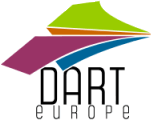Németh János
Molecular hydrogen affords neuroprotection in a new translational piglet model of hypoxic-ischemic encephalopathy.
Doktori értekezés, Szegedi Tudományegyetem (2000-).
(2017)
(Kéziratban)
Előnézet |
PDF
(disszertáció)
Download (7MB) | Előnézet |
Előnézet |
PDF
(tézisfüzet)
Download (493kB) | Előnézet |
Előnézet |
PDF
(tézisfüzet)
Download (496kB) | Előnézet |
Absztrakt (kivonat) idegen nyelven
Summary Perinatal asphyxia (PA) is one of the leading causes of neonatal mortality and morbidity worldwide. Despite the adequate neonatal resuscitation techniques, hypoxic-ischemic encephalopathy (HIE) may develop in survivors. Controlled therapeutic hypothermia (TH) became the gold standard care of asphyxiated babies, but its efficacy to prevent long-term disabilities is limited, therefore, additional neuroprotective interventions are required urgently. The newborn pig is regarded as one of the best models for human PA/HIE pathology and testing putative therapeutic interventions. The best methodology to elicit pathophysiologically/clinically relevant PA insult in animals is still being debated perhaps resulting in some of the failures of alleged neuroprotective therapies in clinical trials. Our major aim was to create a translationally relevant newborn piglet PA/HIE model. Accordingly, we investigated the effects of bilateral carotid artery occlusion (BCAO) on cortical blood flow (CoBF), a routinely applied method in the literature to augment hypoxic stress. Then we developed and extensively characterized our new PA/HIE model of PA/HIE and subsequently tested the neuroprotective potential of molecular H2 in our model. Newborn piglets were anesthetized, instrumented and mechanically ventilated. The effects of BCAO on CoBF were analysed through an implanted cranial window by laser speckle contrast imaging and analysis. PA (6%O2, 20%CO2, 20min) was induced in separate groups of animals to elicit HIE. One group served for testing the effects of H2 administered during reventilation (2.1%H2, 21%O2, 4h) on brain electrical activity, neuronal damage and oxidative stress at 24h survival). BCAO did not reduce CoBF. PA elicited clinically relevant severe alterations in cardiovascular and blood gas/metabolic parameters, resulting in depressed electroencephalogram (EEG), extensive neuronal damage associated with oxidative stress assessed by 8-OHdG immunoreactivity. Molecular H2 facilitated EEG recovery, ameliorated neonatal brain injury and alleviated oxidative stress. In conclusion, our new PA method was able to elicit reproducible, moderate/severe HIE without BCAO. The model was adequate to reveal the neuroprotective effect of molecular H2 administered in a clinically relevant, post-insult time window. The mechanism of neuroprotection appears to involve the reduction of oxidative stress. Encouraged by these promising results, to describe the effect of H2 administration combined with TH remains our future direction.
| Mű típusa: | Disszertáció (Doktori értekezés) |
|---|---|
| Publikációban használt név: | Németh János |
| Magyar cím: | A molekuláris hidrogén neuroprotektív hatásának vizsgálata új hipoxiás-iszkémiás enkefalopátia transzlációs malac modellben |
| Témavezető(k): | Témavezető neve Beosztás, tudományos fokozat, intézmény MTMT szerző azonosító Domoki Ferenc egyetemi docens, SZTE ÁOK Élettani Intézet 10001765 |
| Szakterület: | 03. Orvos- és egészségtudomány > 03.01. Általános orvostudomány |
| Doktori iskola: | Elméleti Orvostudományok Doktori Iskola |
| Tudományterület / tudományág: | Orvostudományok > Elméleti orvostudományok |
| Nyelv: | angol |
| Védés dátuma: | 2017. szeptember 25. |
| EPrint azonosító (ID): | 4072 |
| A mű MTMT azonosítója: | 3268493 |
| doi: | https://doi.org/10.14232/phd.4072 |
| A feltöltés ideje: | 2017. okt. 02. 09:51 |
| Utolsó módosítás: | 2020. máj. 28. 11:15 |
| URI: | https://doktori.bibl.u-szeged.hu/id/eprint/4072 |
| Védés állapota: | védett |
Actions (login required)
 |
Tétel nézet |

 Repozitórium letöltési statisztika
Repozitórium letöltési statisztika Repozitórium letöltési statisztika
Repozitórium letöltési statisztika




